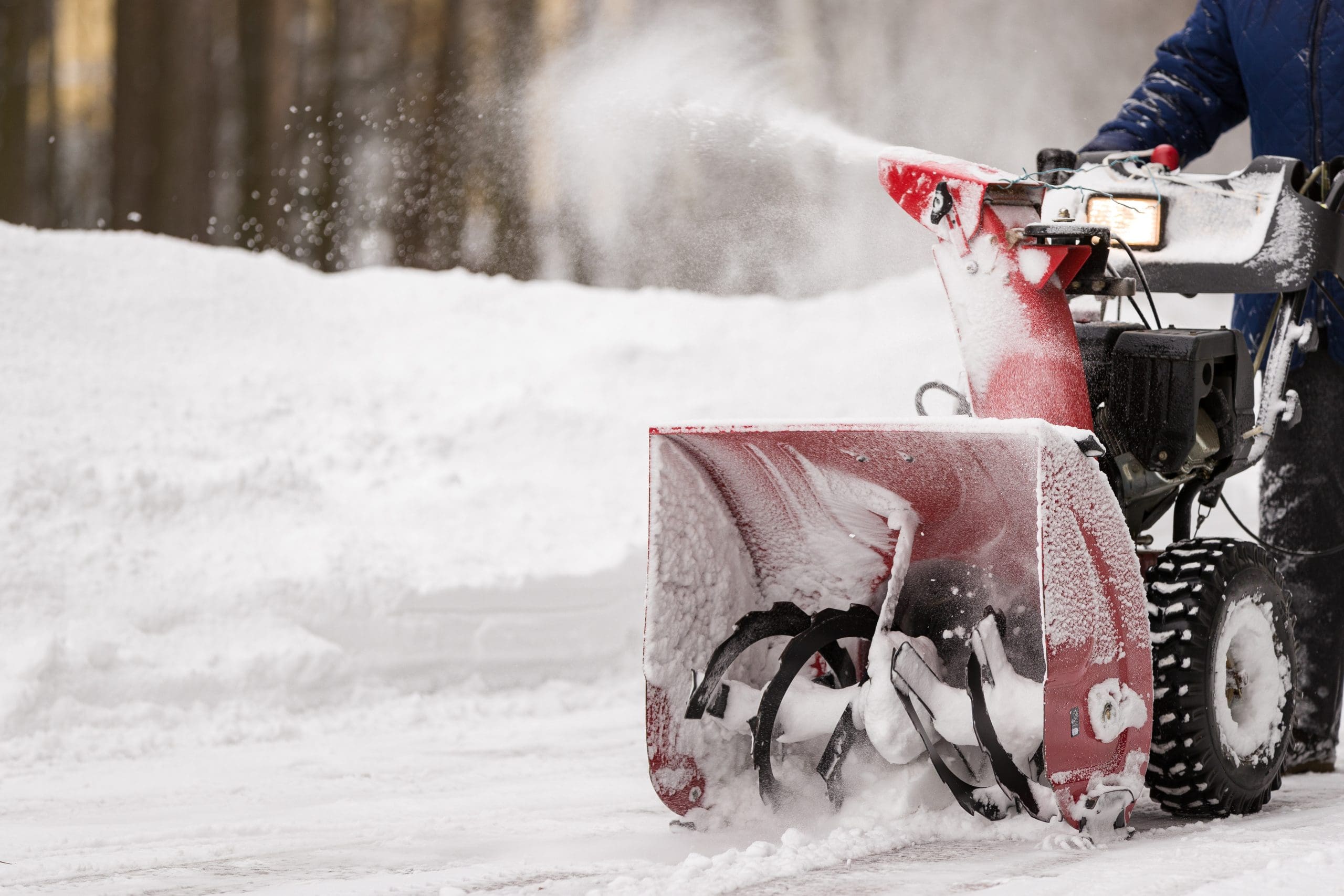
If your landscape company operates year-round, there are several safety factors to keep in mind over the winter, especially if you’re in the snow removal business.
Some of these threats include slips and falls, cold-related illnesses and injuries and accidents related to snow blowers.
Slips and Falls
Managing slips and falls is a major concern for your customers, but your employees can be at risk as they clear jobsites of snow. In 2014, the U.S. Bureau of Labor Statistics (BLS) reported that over 40,000 workers lost time at work due to ice-related slip-and-fall injuries.
You can help mitigate the risk of slips and falls by requiring your team members to wear insulated and water-resistant boots with good rubber treads when they are clearing walkways of snow and ice.
Teach them to change their gait when walking on icy surfaces. Employees should strive to walk as flatfooted as possible and at a slower pace so they can react to changes in traction.
You should also instruct your crews on how to fall safely to reduce the severity of their injuries. When falling, they should bend their knees and try to fall on their side rather than using their arms to break their fall. Employees should tuck their chin to their chest to prevent their head from hitting the ground.
Visibility can also be an issue as the sun sets earlier. Make sure there is enough lighting in your parking lot to avoid any potential incidents while workers are arriving to work in the morning or leaving in the evening. Place clear signage around hazard areas at your facility if there are wet floors.
Cold Stress
Whether your team is clearing away snow on sidewalks or installing projects during the winter months, extended exposure to cold or freezing temperatures can lead to serious health problems. Even a combination of cool temperatures, wind and moisture can result in various cold-stress injuries. Hypothermia can occur at temperatures above 40 degrees Fahrenheit if a person becomes chilled from rain or sweat.
One question you might be asking is how cold is too cold. This will vary across different parts of the county and wind chill can also impact how cold the body feels. For example, when the air temperature is 40°F, and the wind speed is 35 mph, the effect on the exposed skin is as if the air temperature was 28°F.
Some of the cold-related injuries that can occur include hypothermia, trench foot and frostbite. Train your team on recognizing the symptoms of these different types of cold stress and first-aid procedures.
Encourage employees to layer their clothing. They should wear an inner layer that wicks perspiration away from skin, a middle layer that absorbs perspiration and retains warmth and an outer layer that protects against wind and allows ventilation. They should also wear hats that cover the ears and neck and are made of wool or a knit material with a wind-proof outer shell.
Provide your team with warm, non-caffeinated beverages and allow for breaks in heated spaces.
Operating Snow Blowers
While snow blowers can and are operated safely, more than 5,700 emergency room visits each year stem from snow blower accidents, with approximately 590 of them involving finger amputations. These types of accidents often occur when the operator is trying to clear snow or debris from the chute with their hands.
Train crews to stop the engine, disconnect the spark plug, and wait at least 20 seconds for the auger to stop rotating if snow or debris jams the chute. They should use a long stick, broom handle, or other solid object to clear wet snow or debris. Employees should be mindful of possible recoil of the motor and blades due to stored energy, even after the machine has been turned off.
If an employee does severe their fingers, call 911 and control the bleeding by applying pressure to the wound with a sterile cloth. Raise the injured area and take steps to prevent shock. Lay the worker flat, raise their feet about 12 inches and cover them with a blanket or coat.
Wrap the severed appendage in a clean damp cloth and place it in a sealed bag and put the bag on ice. Do not put the body part in direct contact with ice or water.

